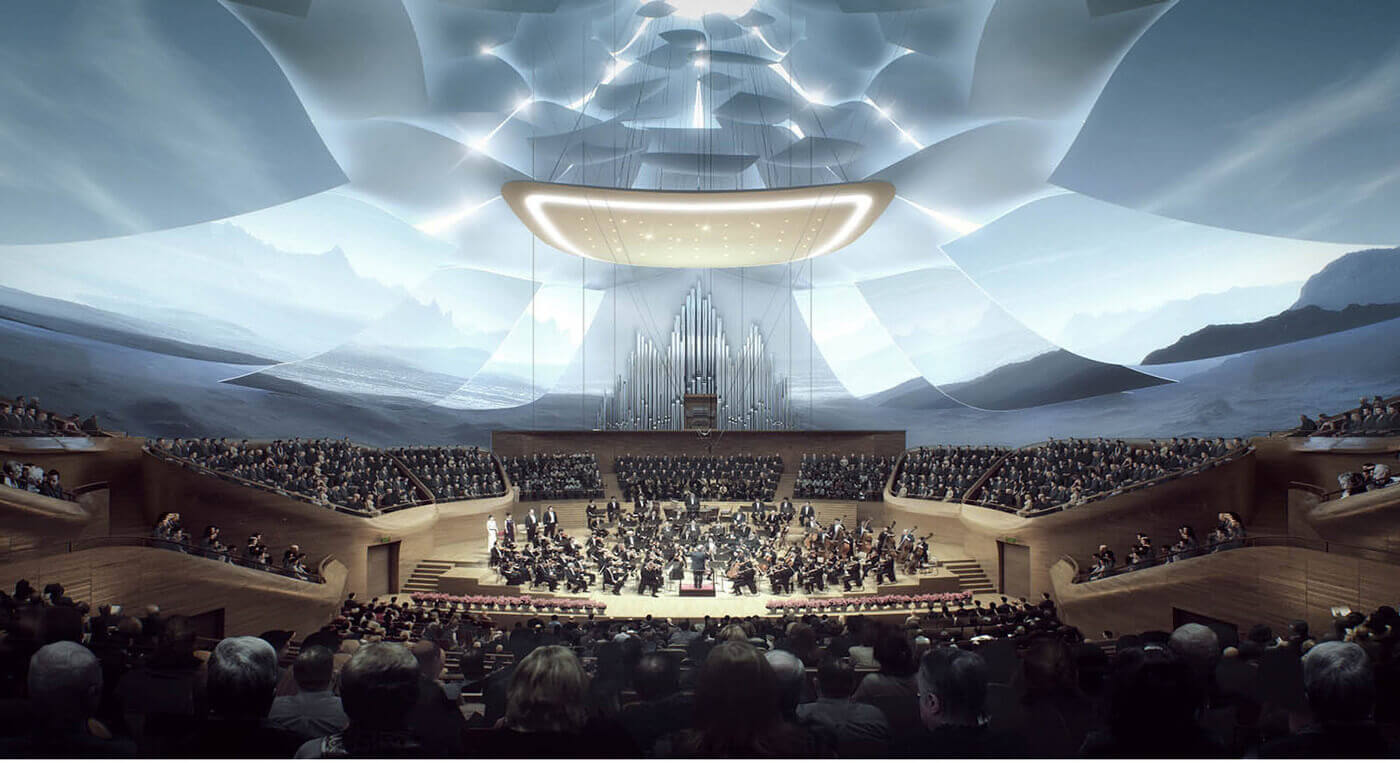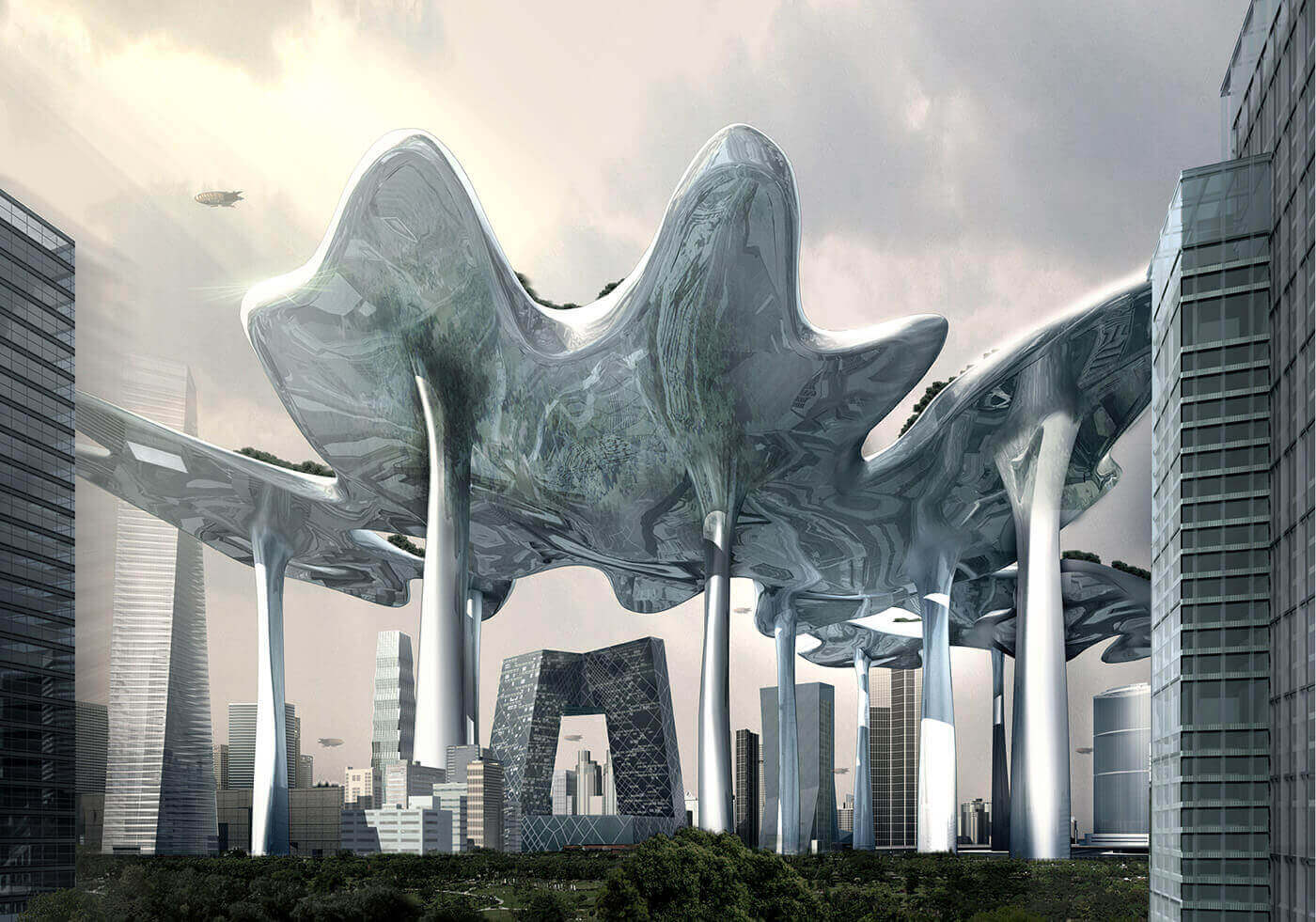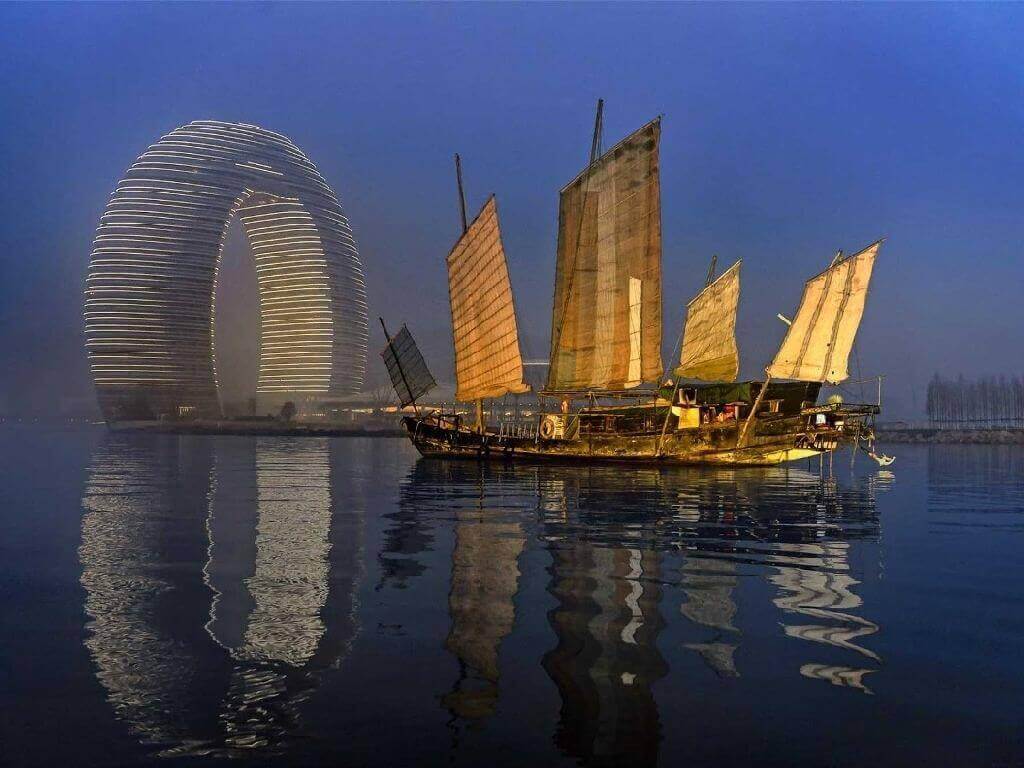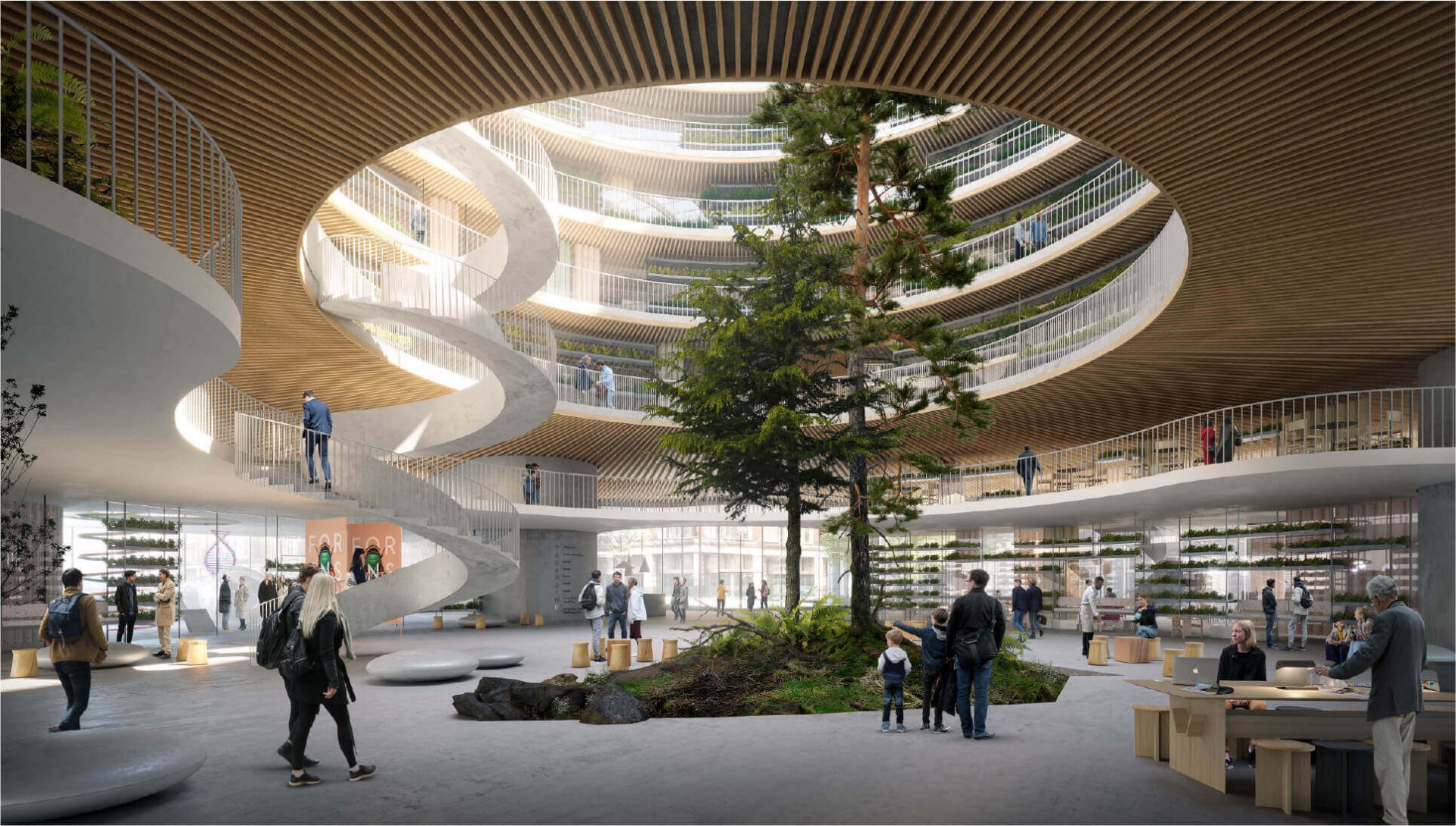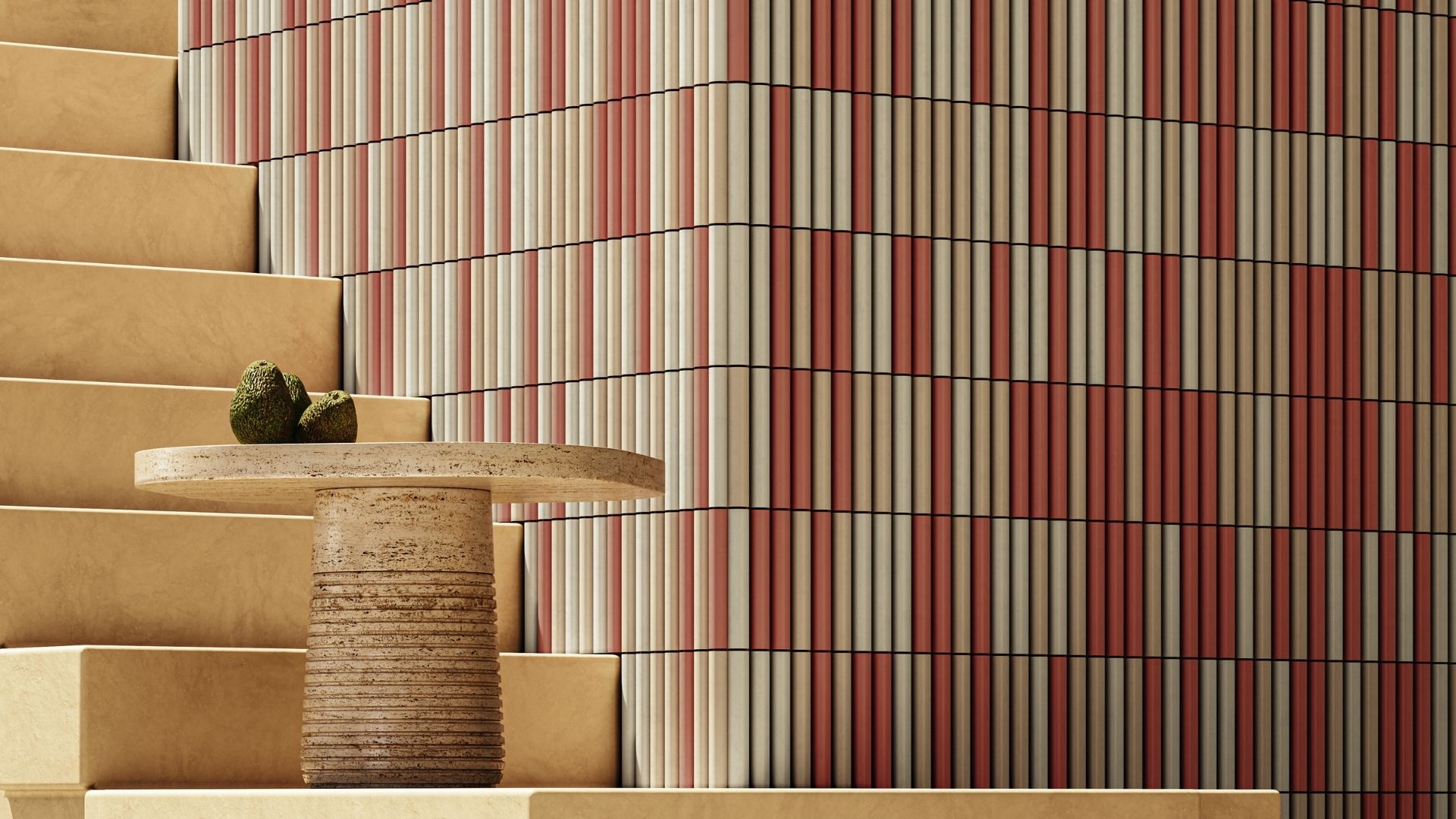A young trio with the future in mind and nature in their souls
MAD Architects is a global architecture studio bravely committed to building the skyline of the future

When thinking about the city of the future, we envision futuristic mega-landscapes, levitating islands and interconnected smart environments. Back to reality, nobody materializes this crazy imaginary better than MAD Architects does – pun intended.
From Beijing to Los Angeles, to the world
MAD was founded in 2004 in Beijing by Chinese architect Ma Yansong when he was in his late twenties, soon joined by Yosuke Hayano and Dang Qun.
With offices in China and USA, MAD is today one of the youngest and most successful architecture firms in the world, developing futuristic and technologically advanced projects that reinterpret the long-standing Eastern affinity for nature, exaggerating organic proportions to extra-terrestrial forms.
MAD Architects – Selected projects:
Sheraton Huzhou Hot Spring Resort – Huzhou, China
Just as our beloved satellite, also known as Sheraton Moon Hotel, this building has a suggestive and harmonic bond with the Nan Tai Lake: when the night falls, the building is wrapped with soft light and its reflection on the water recalls a bright moon rising above the lake.
This ring-shaped hotel is also a great example of MAD‘s endeavor to always listen to the spiritual needs of the residents, creating a balance between humanity and the environment.

Absolute Towers
Designed as an attempt to respond to the needs of a growing city, the Absolute Towers in Mississauga, Canada, are much more than functional to their inhabitants: nicknamed ‘Marilyn Monroe Towers’ for their sinuous shape, they rotate at different levels by different degrees, to provide each unit with 360° views connecting the residents with all the natural landscape surrounding the buildings.

Ordos Museum
The design for Ordos Museum in China takes one step further in blending manmade creations with the existing environment: the dune-like building looks generated from the sand of the nearby Gobi desert, and it functions as a shield, protecting centuries of Mongolian history not only from the frequent sandstorms of the region but also, metaphorically, from the unpredictable growth of the city.

Hutong Bubble
When in 2006 MAD Architects were called to imagine the city of Beijing in 2050, the envisioned scenario didn’t fail to include metallic bubbles scattered over the city’s oldest neighborhood, whose existence was threatened by China’s rapid development.
No longer than three years later, the first Hutong Bubble appeared in one of Beijing’s districts, followed by another construction ten years later. Bubbles exist in symbiosis with the ancient and with nature, without interfering with the residents’ lives in the old neighborhood: their reflective surface mirrors the trees and the preexisting buildings while conferring a futuristic alien-like, eye-catching aesthetic.

What’s next, then?
There’s a lot to expect from MAD Architects, and indeed there’s a lot coming. The studio has been recently working with Hyperloop Transportation Technology on the development of a futuristic, elevated transport system, demonstrating once again how artificial features can merge with nature harmoniously, giving life to a new urban infrastructure.
Last but not least, MAD has been chosen to design the new Lucas Museum of Narrative Art in Los Angeles, representing their first museum in the USA; LA mayor Eric Garcetti described the project as one of the boldest pieces of architecture to be seen in the world, and given what those guys already showed, how can we not believe so? I mean, one should be mad.








